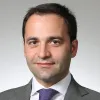Excerpts from Kalin Anev Janse's interview with Financieele Dagblad (Netherlands)
Excerpts from interview with Kalin Anev Janse, ESM Secretary General
Financieele Dagblad (Netherlands)
2 October 2017
Interviewers: Maarten van Poll and Rik Winkel.
Why does ESM want to issue a dollar bond?
So far, we have only issued bonds in euros. We have been very successful with that. We want to raise €61.5 billion in the market this year, our second-biggest year. This makes us the largest in our peer group. We issue more than KfW, more than the EIB and the World Bank in euros. In this respect, we are truly a market leader.
Now that we’ve been here for seven years, we decided to expand our group of investors. Because all our bonds are denominated in euros, we’re unable to reach some of our investors. In America, for example, and in Asia, the Middle East and Latin America.
The second reason is that we want to reduce liquidity risk on the issuance side. We want to make sure that we’re not depending on one currency. If there are problems with one of the currencies, we want to make sure there’s another one.
A third reason is that there are some cost benefits. There are financial benefits if you issue a two- to three-year dollar bond and then swap it back into euros.
How big is the financial benefit?
How much exactly differs from day to day, but with 2 to 10 basis points on an amount of €2 to €3 billion, it is a lot of money. The cost argument is not the most important for us, but it’s always welcome.
How much money does the ESM want to raise with the dollar deal?
We don’t want to come to the market just once, but we want to strategically build a curve. We want to be in the market at least once or two times a year, in benchmark size. So we are now thinking of $2 to $3 billion dollars with each deal.
We want to set up a short-term curve with maturities of 2, 3 and 5 years. The demand for dollars is strongest in that part of the curve. In the 20, 30 years part of the curve, demand for euros is stronger.
Also, you get different types of investors. In the euro market, you’ve got a lot of bank treasuries for 5 years, sovereign wealth funds and central banks between 5 and 15 years, and insurance companies and pension funds in maturities over fifteen years.
We’re the only true eurozone credit that exists. So if an investor wants exposure to the eurozone, they can buy a bit of Germany, and a bit of France. Or they can buy an ESM bond. We are seen as a real supporting force for the euro zone credit. In a next crisis, we could also use other currencies.
What does the ESM think of the idea of issuing ESBies?
This is a complex structured product, for which there is no demand yet, according to us and the banks we work with. It is very difficult to explain to investors. And if it is very complex, you will not get a market that is big enough. In addition, investors will demand a high return. And then it defeats its purpose.
Because the ESM wants to keep costs low?
At the moment we are asking Greece to pay an interest rate of 1.1%, which is very low. They have come to market for about 4.5% for a five-year bond. It is much cheaper for Greece to borrow money from us. And that enables them to implement reforms.
Is an ESM bond a very simple proxy for what ESBies could look like?
No. An ESB works on the basis of securitisation, and that’s not the case for the ESM. At the ESM you get an AA + rating, a very strong credit rating, and every investor gets treated exactly the same. An ESM bond is not a structured product, but a plain vanilla bond, covered by our 19 Member States.
Does the ESM know who bought its bonds?
Our books are usually oversubscribed, and we know exactly who buys our bonds on the primary market. We also know how much the European Central Bank buys in the secondary market. At the moment, it's about €90 billion of outstanding debt, about 38-39%.
And who are the investors you do business with?
We don’t name them, but I speak to 100 to 150 investors each year.
Author

Contacts


